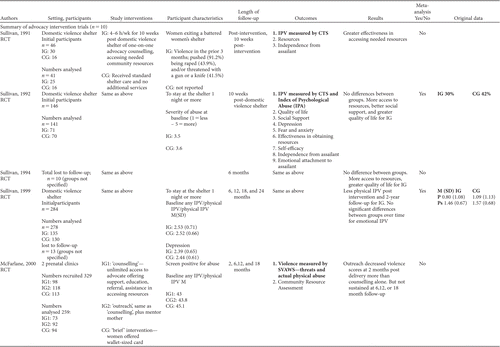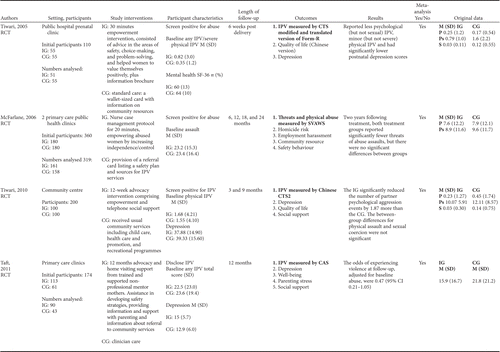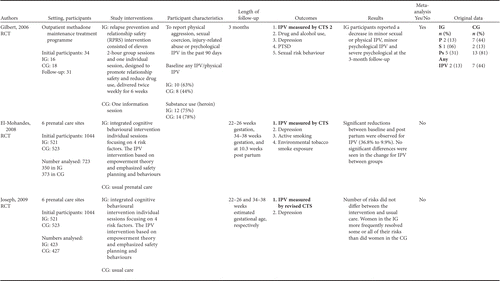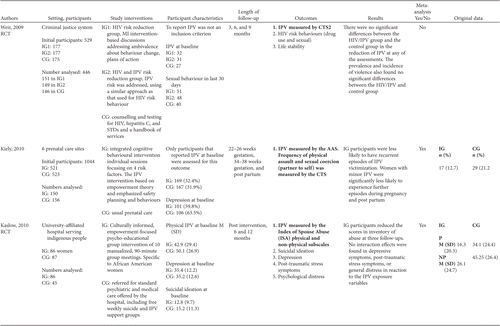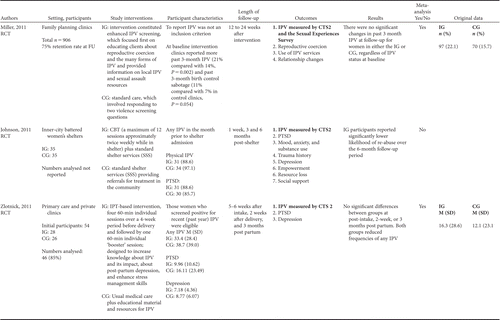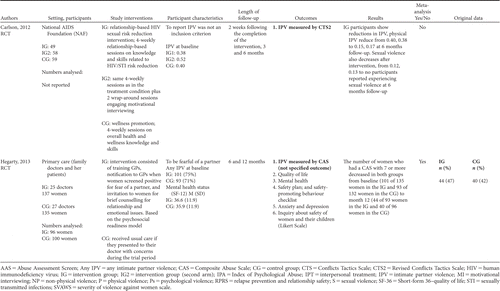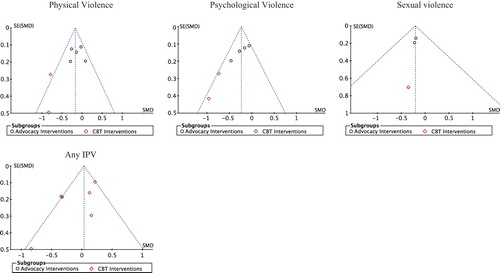Figures & data
Table I. Description of search terms.
Figure 1. Flow chart for the selection of eligible studies. IPV = intimate partner violence; RCT = randomized control trial; IG = intervention group; CG: control group. *Three trials reported four manuscripts.
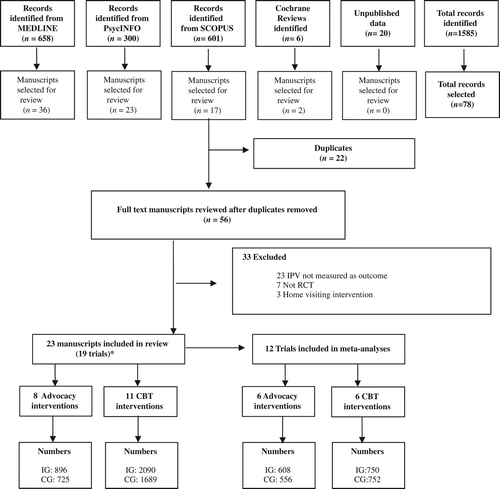
Table III. Risk of bias summary of advocacy and CBT interventions: review of authors’ judgements about each risk of bias item for each included study. + (Green): yes (low risk of bias), ? (Yellow): unclear, − (Red): No (high risk of bias).
Figure 2. Physical, psychological, sexual, and any IPV: efficacy of advocacy and CBT interventions versus usual care. Weights are from fixed effects analysis. CI = confidence interval; SMD = standard mean differences.
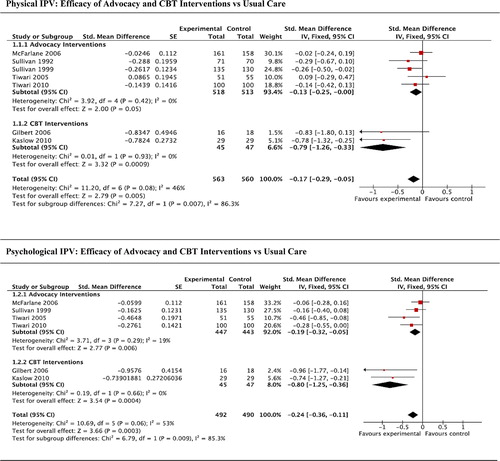
Table IV. Efficacy of advocacy and CBT interventions versus usual care grouping by follow-ups and intensity of interventions.

